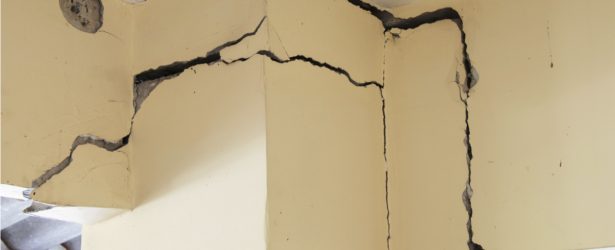Do you have cracks in your walls? its likely that your buildings foundations are moving!
A building’s foundation is its bedrock, providing essential support and stability. However, foundation movement can pose challenges to the structural integrity of a construction project. In this article, we explore insights from CSIRO (Commonwealth Scientific and Industrial Research Organisation) research and delve into issues contributing to foundation movement, including seasonal swelling and shrinkage of clay soil, the impact of trees, garden beds, an unprotected perimeter, and leaking pipes.
Seasonal Swelling and Shrinkage of Clay Soil:
One of the primary contributors to foundation movement is the soil upon which a structure rests. Clay soil, prevalent in many regions, is particularly susceptible to seasonal changes. As clay soil absorbs moisture, it swells, and as it dries, it shrinks. This cyclical swelling and shrinkage can exert significant pressure on foundations, leading to uneven settlement and potential structural damage.
CSIRO’s research underscores the importance of understanding soil behavior, emphasizing the need for proper site assessments and soil management strategies. Implementing measures to control moisture levels around the foundation, such as proper drainage systems, can help mitigate the impact of clay soil movements.
Trees and Garden Beds:
The presence of trees and garden beds in close proximity to a building can contribute to foundation movement. Tree roots, in their search for moisture, can extract water from the soil beneath foundations, leading to soil desiccation and potential subsidence. Similarly, garden beds with excessive watering can create uneven moisture distribution in the soil.
CSIRO’s findings highlight the significance of maintaining an appropriate distance between trees, gardens, and building foundations. Strategic landscaping practices, including root barriers and proper irrigation management, can help prevent excessive soil movement.
Unprotected Perimeter:
The perimeter of a building is particularly vulnerable to moisture infiltration, which can exacerbate foundation movement. Improper drainage, inadequate waterproofing, or the absence of protective measures can lead to soil instability and compromise the foundation’s performance.
CSIRO’s research emphasizes the importance of a well-protected perimeter. Implementing proper waterproofing measures, such as installing moisture barriers and ensuring effective drainage systems, can safeguard the foundation against external moisture sources.
Leaking Pipes:
Undetected leaks in plumbing systems can introduce excess moisture into the soil surrounding a building’s foundation. This can lead to soil instability, erosion, and potential foundation movement.
CSIRO’s research highlights the need for regular inspection and maintenance of plumbing systems to identify and address leaks promptly. Proactive measures, such as routine plumbing checks and moisture monitoring, can prevent water-induced foundation issues.
Benefits of Engaging a Structural Engineer:
Engaging a qualified structural engineer brings a range of benefits to the table when addressing and preventing foundation-related challenges:
- Site-Specific Assessments: Structural engineers conduct thorough site assessments, considering soil conditions, water tables, and environmental factors unique to the location. This information guides the development of tailored foundation solutions.
- Foundation Design Expertise: Structural engineers possess the expertise to design foundations that suit the specific needs of a project. This includes selecting appropriate footing types, reinforcement strategies, and materials to ensure optimal stability.
- Construction Oversight: Structural engineers provide oversight during the construction phase, ensuring that foundation elements are installed according to design specifications. This proactive involvement helps identify and address potential issues before they escalate.
- Ongoing Monitoring: Structural engineers can implement monitoring systems to track foundation performance over time. This allows for early detection of any signs of movement or distress, enabling timely intervention.
- Mitigation Strategies: In the event of unforeseen challenges, structural engineers can develop mitigation strategies to address foundation movement and prevent further issues. Their expertise contributes to the longevity and resilience of the structure.
Conclusion:
Addressing foundation movement involves a comprehensive understanding of soil dynamics, construction practices, and environmental factors. CSIRO’s research provides crucial insights, and engaging a structural engineer adds a layer of expertise to the process. By combining research findings with the practical knowledge of structural engineers, construction professionals can navigate foundation-related challenges more effectively, ensuring the stability and durability of structures in the face of dynamic environmental forces.

